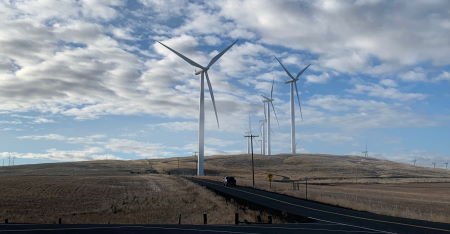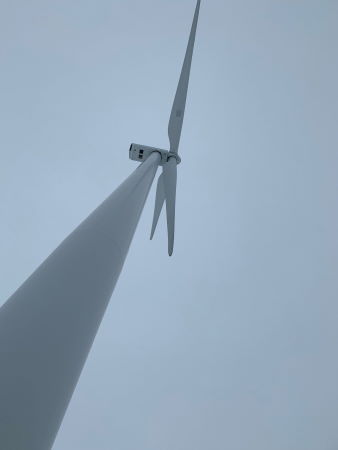Hydraulic and Electric Pitch Systems

At Kurz Wind Division, we work with customers handling various types of Wind Turbines. Most of the sites we have relationships with having some sort of hydraulic system playing an integral role in the machine’s performance.
These hydraulic systems are highly complex and require multiple fail-safes to ensure the asset is operating safely and efficiently.
That said, where do we typically find the most differences of hydraulic applications across turbine OEMs such as Suzlon, Vestas, GE, and Siemens Gamesa?
The way the blades are pitched.
Electric Wind Turbine Pitch Systems
We have a lot of customers in the US and overseas. Some of our customers have hundreds of Vestas V110 Turbines or Siemens 2.3 MW towers. Others may have GE 1.5 MW turbines. So, what differentiates the pitch system between the different turbine types?
Simply put – the way the blades move in and out of the wind.
In an electric pitch system, a DC motor ‘pitches’ the massive wind turbine blade to capture the optimal amount of wind for power production. Typically, you will find a single pitch motor per axis handling the high torque and foot pounds necessary to move the heavy blades. In the case of an emergency, batteries or ultracapacitors will move the blades out of the wind back to zero degrees.
Hydraulic Wind Turbine Pitch Systems
Hydraulic pitch systems are wholly different and seemingly more complex.
A hydraulic pump, motor, and reservoir are required to pitch each turbine blade to the optimal position for power production. This regulates the blades angle based on wind speeds and the grid’s production needs.
Typically, the pump and motor are mounted in the nacelle with the hydraulic pistons seated in the hub (connection point of the blades, also called a nose cone).
Hydraulic fluid moves from the nacelle to the hub and communicates with the pitch control slip ring to constantly move and position the blades in the prime wind-capturing blade angle.
As for emergency shut-downs, there is a charged accumulator – basically a hydraulic battery – that can quickly discharge and bring the blades back to a neutral position.

What is Better – Electric or Hydraulic Pitch Systems?
It’s hard to find a wind turbine producing over 3 MW of power with an electric pitch system since hydraulics tend to be more reliable as the blades getting longer and heavier.
Unfortunately, a hydraulic hose leak can cause severe damage to the internal workings of the machine and rack up a hefty cleanup bill.
Electric pitch systems can be very efficient with an improved pitch motor design such as bearing upgrades and stress-proof steel shafts. However, there is always a shelf life to a pitch motor due to mechanical wear of moving components.
Conversely, there is little clean up when a pitch motor fails, and the motor changeout can be completed within a day.
In general, it’s difficult to determine whether hydraulic or electric pitching of the blades is inherently better than the other. Both applications serve to maximize production and ensure a wind technician’s safety.
Feel free to send us an email or leave a comment below with your thoughts. If you need any wind-related products, please reach out to our team today!
Categorised in: Latest Wind Power Industry News - Kurz Wind Division
This post was written by Aaron Rood


Comments are closed here.